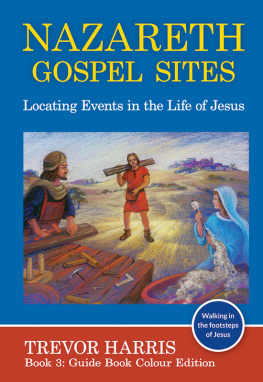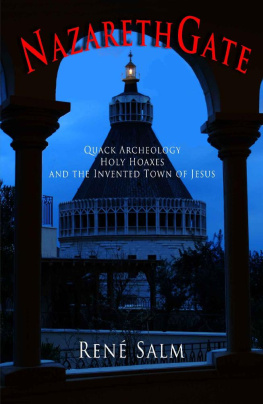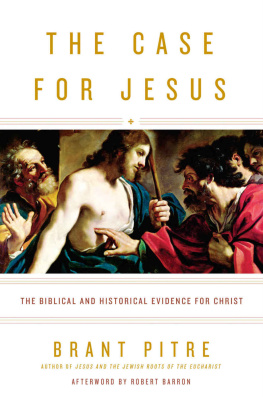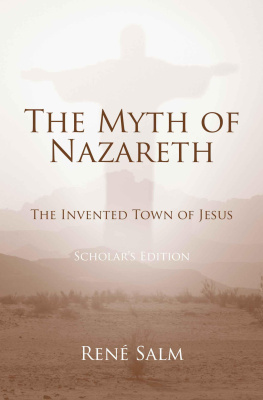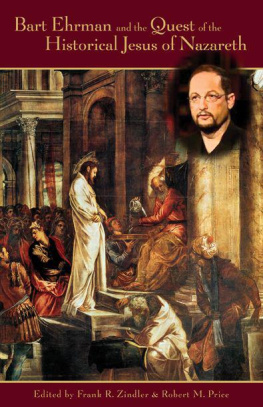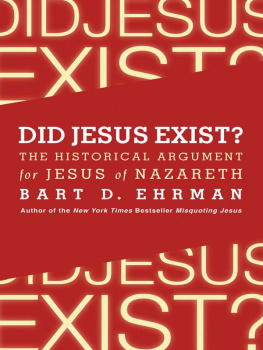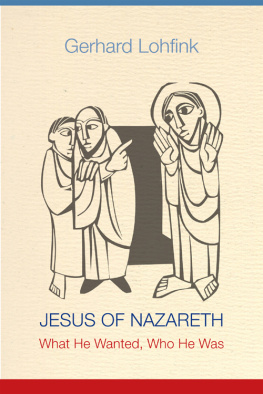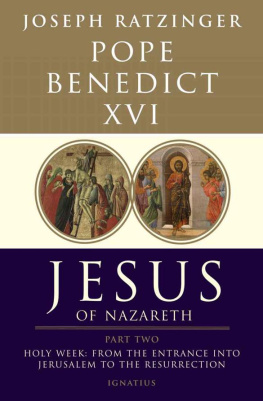PROVING BIBLICAL
NAZARETH
Evidence for the Key Sites of Jesus
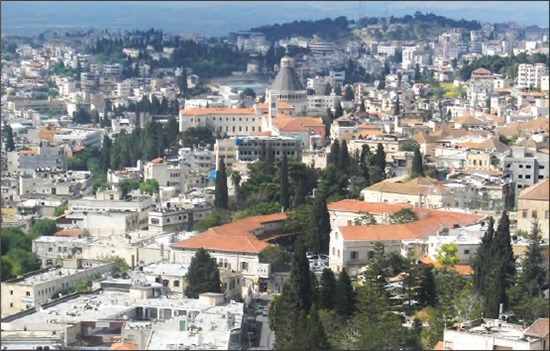
View to Catholic Church of the Annunciation with conical dome, nestled in the historic village site of Nazareth.
Book 2: Study Resource Edition
TREVOR HARRIS
Key-line Christian Research Pty Ltd

THE NAZARETH SERIES
Proving Biblical Nazareth - Evidence for the Key Sites of Jesus
Book 2: Study Resource Edition
Revised 1st. Edition 2017
ISBN 978-0-9925506-1-5 (Print B&W soft cover)
National Library of Australia Cataloguing-in-Publication entry
Dewey Number: 232.9
ISBN 978-0-9925506-2-2 (Print Colour soft cover)
ISBN 978-0-9925506-3-9 (ebook)
Copyright 2017
Author Trevor E. Harris
Published by:
Key-line Christian Research Pty
Ltd P.O. Box 3205
Norwood, South Australia, 5067
Australia
All rights reserved. No part of this book may be used or reproduced by any means, graphic, electronic, or mechanical, including photocopying, recording, taping or by any information storage retrieval system without the written permission of the publisher except in the case of the brief quotations embodied in critical articles and reviews as permitted under the Copyright Act.
Disclaimer: All coordinates given in this book are nominal Google Earth positions which are not quite as accurate as the Global Positioning System (GPS). All maps produced are for illustrative purposes only.
Google maps produced under the conditions of Google Maps. Data from Mapa GISrael ORION-ME. Historic base maps are from the Palestine Exploration Fund (PEF) Survey 1880, courtesy of the Israel Antiquities Authority (IAA).
Cover and book layout design by Anna Dimasi
Illustrations by Trevor Harris, Meg Stephens and Andrew Blaney
Front cover features current view of modern Nazareth seen through the lens of the Annunciation of Mary with the visit of the angel Gabriel. Modified engraving image by Gustave Dore. Refer page 4.
The New King James Version (NKJV) is used for all Bible quotes unless stated otherwise in the text.
Copyright 1982 by Thomas Nelson, Inc., Nashville TN, USA.
Used within the terms and conditions stated by the publisher.
All other credits are listed in the text and Reference Section.
Foreword by a historian
I t has become commonplace in our modern world for atheists and sceptics to attempt to poke holes in the Bible in whatever way they can. I must confess that even with my own experience in archaeology I was surprised when Trevor Harris drew my attention to a hit piece by an atheist author, Ren Salm, alleging that Nazareth did not exist in New Testament times. The claim is that parts of the Gospels are fiction and unreliable.
Trevor has done an in-depth study, partly in response to Salms allegations, but more broadly to ascertain the identity of Biblical sites in the Galilee region. Hence the study is essentially positive, and a genuine advance in what is a continuing puzzle to archaeologists and geographers. The identity and location of many Biblical sites remain a mystery for some villages and cities. Trevor has bitten the proverbial bullet in regard to a number of these sites, and has shown ability in thinking outside of the traditional framework.
This study is mainly occupied with the Lower Galilee, the ancient tribal territory of Zebulun, and locations near the Sea of Galilee, and many site proposals are put forward. He does venture further south and has raised questions about the traditional mountains of Ebal and Gerizim, significant in the story of Joshua in the Promised Land.
He has travelled extensively in the Middle East, and particularly in Israel and Jordan. He has discussed issues with leading archaeologists as well as many local but informed folk, and interacts with the leading archaeological literature on all of the issues he raises. Likewise, he shows that he is familiar with the latest revisions of archaeological periods and their respective dating (pp. 212216) in contrast to the traditional time frames of Kenyon and Albright, which have dominated the field for far too long.
It is not necessary to agree with every last conclusion, but many of his proposals are worthy of serious consideration, and may well be right. For me, some of the proposals like the location of Mount Ebal and Cana require more verification. For his proposal for a Nazareth synagogue he awaits a detailed survey. It remains the case that any argument well-founded in careful geographical and archaeological study is worthy of serious consideration. This surely is the path of progress. Equally, I believe he is right in many of his other conclusions, and especially in regard to his central thesis: the location of biblical Nazareth. I therefore heartily commend this study to the reader.
Dr Murray Adamthwaite, BA, BD, MA, PhD.
Historian with archaeology qualifications. Bible College lecturer, theologian and linguist. Former lecturer, University of Melbourne, Australia.
Foreword by a Bible scholar
I am pleased to recommend Trevor Harris thorough contribution to the study of the hometown of Jesus. To those who would deny that Nazareth even existed, he has provided more than ample evidence that such a denial is untenable. However, this is more than just proving that Nazareth existed. He has gone to lengths to explain how and where the attempt to stone Jesus by his fellow citizens took place.
In his use of historic sources, he has not hesitated to call upon many New Testament passages as witnesses. This is as it should be. Too often one encounters cavalier rejection of the reliablity of the gospel accounts by scholars who are far less critical of non-Christian sources that are not nearly as well-attested.
Of particular interest to me is the in-depth attempt to connect the church reported as built in the early Fourth Century by Count Joseph with excavated remains of a possible Jewish Christian synagogue.
Trevor has allowed his research to carry him well outside the geographic boundaries of Nazareth, and the reader will find discussions of many other sites that Jesus would have known in his youth and where he would later pass and perform miracles.
There is necessarily a healthy amount of speculation that requires further research. Some of the key sites are recommended for further archaeological investigation. The total package is a welcome contribution to moving forward the scholarly discussion of the city of Nazareth.
Ray Pritz, PhD (Hebrew University) Jerusalem.
Lecturer Hebrew University.
Former Director Bible Society in Israel.
Resource educator, Translations Department, United Bible Societies.
About the author
T revor Harris received his Honours degree in Architecture in 1971. During his undergraduate period he took a year (1969) off to hitch-hike around the world on a low budget of $A10 per day in todays value. Part of that journey included time in the Middle East and the lands of the Bible. This was the start of a long passion for evidence of the archaeology and history of the Bible.
A Masters degree in Urban and Regional Planning was completed in 1976. This gave training in mapping, topographic analysis and planning criteria that is essential in evaluating historic site proposals. Both of these degrees contained a large portion of historical studies which is one of his great passions. He has been an architect and planner for 23 years in Government and 21 years in his own private practice.
Next page

